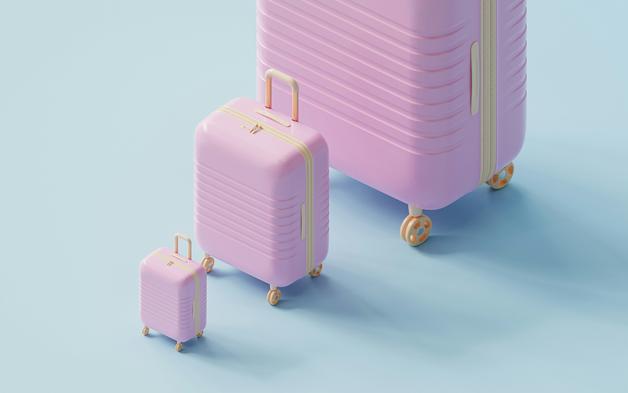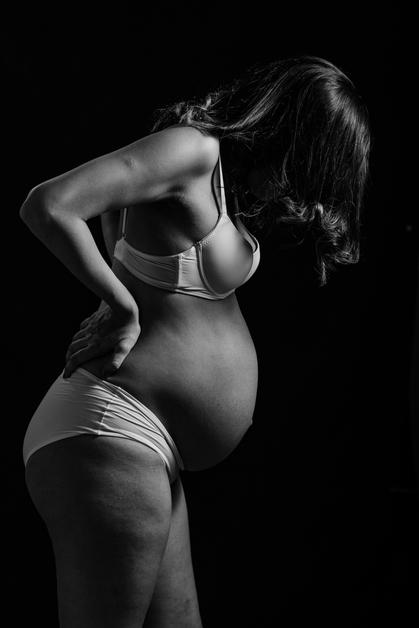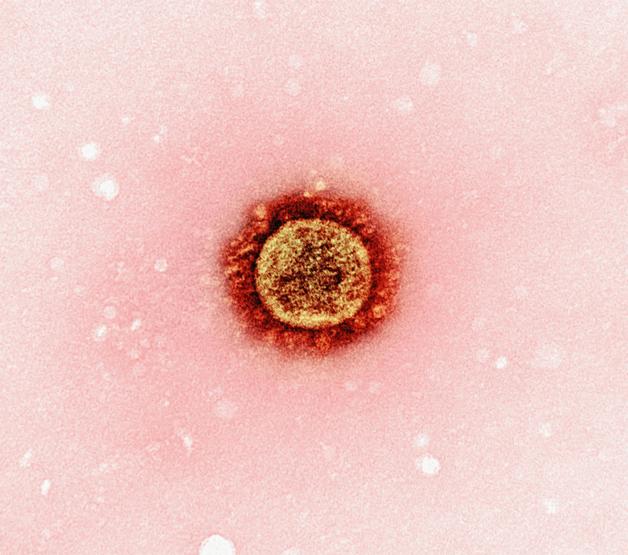Welcoming a new baby is a cascade of anticipation, hope, and, let’s be frank, a dose of anxiety. How do you dodge the last-minute scramble and start your hospital journey with confidence? The answer often lies in one unassuming hero: the maternity bag. Many parents find themselves quietly wondering: When is the right time to pack it? What if I miss something essential? What will really make a difference during those first precious hours and days? Rather than leaving anything to chance, let’s unpack the science, practice, and nuance behind building the perfect maternity bag—one that meets every medical, emotional, and practical need, regardless of season, birth plan, or feeding choice. Expect evidence-based advice, clarity around “must-haves” versus “nice-to-haves,” and solutions for those persistent little worries (What if baby is small for gestational age? Will the postpartum period be more comfortable with specific supplies?). Take a deep breath; you’re about to feel prepared, not overwhelmed.
Why Planning Your Maternity Bag Makes a Real Difference
For many parents, the maternity bag is more than just luggage. It’s a preparation strategy, a way to reduce stress hormones (notably cortisol, which can surge as due dates approach) and bring tangible order to emotional chaos. Have you heard recommendations to prepare the maternity bag at 32–35 weeks? There’s logic behind it: labor can be unpredictable, especially in late pregnancy, when phenomena like pre-labor rupture of membranes or spontaneous contractions may alter your carefully set timeline.
Medically, being organized improves not only admission efficiency (you don’t want to drop vital documents like your birth plan or medical notes at home when contractions pick up pace) but also postpartum outcomes. Packing supportive clothing and hygiene items can promote wound healing after episiotomy or cesarean deliveries, protect perineal tissue, and facilitate the very first breastfeeding attempts—vital for establishing prolactin and oxytocin feedback loops.
So, who should take a lead in packing? While many see it as a maternal responsibility, involving your partner supports shared decision-making, which studies show decreases peripartum distress and strengthens bonding.
The Anatomy of the Maternity Bag: What, When, and For Whom?
Decoding the Types: Maternity Bag, Hospital Bag, and Diaper Bag
Parenting language is dense with nuance. The maternity bag centers on items for the mother, supporting her through labor, birth, and early recovery (clothing, self-care, pain relief accessories, essential documents). A hospital bag sometimes expands to include both mom and baby needs, and a diaper bag becomes your go-to for daily outings post-discharge. Why this distinction? Each moment brings unique, time-sensitive needs. Trying to squish a week’s worth of variably sized newborn outfits, postpartum pads, water bottles and ID cards into a single holdall, only to dig frantically for your insurance certificate at triage, is—let’s just say—suboptimal.
Two bags, or one? If you’re envisioning a streamlined experience, divide and conquer: pack a compact, easy-access bag for delivery room essentials (ID, labor snacks, one newborn outfit, perineal pads) and a larger case for postnatal recovery and baby care.
Timing: Why Early Packing is More Than a Convenience
The unpredictability of labor onset isn’t just folklore; scientific cohorts confirm that spontaneous onset before 37 weeks affects nearly 10% of pregnancies globally. That means preparation by 35 weeks is both pragmatic and protective. If lifestyle or medical factors (such as multiple gestation, preeclampsia, or placenta previa) increase preterm birth risk, consider starting even earlier.
Maternity Bag Essentials: What Science and Experience Agree On
For Mothers: Comfort, Hygiene, and Recovery
- Adaptive clothing: What’s genuinely comfortable postpartum? Look for loose, breathable fabrics that support mobility and breastfeeding. Button-down pajamas or open-back gowns make breast anatomical access easier, especially if latching is initially challenging. Avoid tight elastics near incision lines after cesareans to prevent wound irritation and promote tissue oxygenation.
- Healthcare-grade hygiene products: Select maternity pads labeled “postpartum” (hospital brands may differ from those used for menstruation, as postpartum bleeding—lochia—can persist, and conventional pads may cause friction or reaction due to pH fluctuations). A hypoallergenic nipple cream with lanolin or plant-based alternatives reduces cracking during initial feeds, while gentle, fragrance-free toiletries safeguard against vulvovaginal irritation—an overlooked risk in the early puerperal period.
- Soothing extras: Consider a reusable water bottle (labor can lead to dehydration, which research associates with increased maternal fatigue and slower lactation onset), a nightlight for gentle nighttime feeds (blue-spectrum lights can disrupt sleep cycles), and a support pillow for optimal ergonomic breastfeeding alignment.
For Baby: Newborn Care With a Medical Touch
- Layering for thermoregulation: Why multiple sized outfits? Neonatal thermoregulation is immature; immediately postpartum, babies risk rapid heat loss, hence layering (bodysuits in varied sizes, a soft blanket, hat, and mittens) helps prevent hypothermia—a top neonatal health priority.
- Diapering essentials: Include hypoallergenic diapers free from fragrances, as newborn skin (barrier function underdeveloped) is highly vulnerable to irritants. Always stash a sample of your hospital’s preferred cord care (some advocate for “dry cord” vs. antiseptic solutions—ask your provider).
- First care tools: Gentlest possible cleansers and moisturizers, meeting pediatric dermatologist recommendations, will minimize risks of contact dermatitis. Don’t forget muslin cloths—multiply useful as burp cloth, swaddle, or emergency washcloth.
- Comfort objects: A swaddle blanket aids with skin-to-skin, which medical studies correlate with temperature stabilization, glucose regulation, and enhanced parent-infant attachment.
For Partners and Support Persons: Invaluable Practicalities
Labor can be long. Partners benefit from spare clothes, toiletries, phone chargers, and a stash of easily digestible snacks (low-fiber, non-perishable options like granola bars or crackers). Quick access to cash or cards is essential for hospital cafeterias or last-minute parking. A pillow or soft wrap can make those hard waiting room chairs slightly more bearable.
Special Considerations: Medical Conditions, Seasonal Adjustments, and Feeding Preferences
Adapting to Medical Needs
Did your prenatal consultations highlight higher surgical birth risk? Pack garments avoiding pressure on the abdomen and dedicate a pouch exclusively to postoperative supplies (high-waisted underwear, wound dressings if required). If breastfeeding is your intention, research demonstrates that nipple shields or breast pumps may assist when colostrum transfer is challenging in the neonatal period—include as needed. For formula feeding, bring sterilized bottles (wide-neck nipples are often recommended for ease of cleaning and better suckling mechanics) and pre-measured formula in single-dose sachets.
Seasonality, Climate, and Their Influence
Summer brings instant sweating—a physiological norm due to hormonal adjustment after birth. Prioritize breathable cotton for both mom and infant, a fan (hospital policy permitting), and a robust water bottle. In winter, warmth becomes protective: thick socks, layered outfits, a fleece blanket for the car ride home.
Rainy or humid climates warrant a waterproof maternity bag (look for antibacterial linings, which reduce the risk of mold) and quick-dry fabrics. Insects? Choose mosquito-repellent patches safe for newborns—some hospitals welcome these, others ask for only topical creams.
Efficient Packing: Organization Without the Overwhelm
- Checklists: Keeping a master list helps cover medical needs, administrative necessities, and comfort items. Update as your due date approaches.
- Organization cubes or labeled pouches: Segregate mother, baby, and partner essentials—no more rummaging required when your baby’s first cry interrupts your train of thought.
- Prioritize must-haves: Do you really need three stuffed animals? Pare down to what’s medically and practically necessary; excess items create clutter in compact hospital rooms.
- Smart document storage: Keep your identification, insurance, and care records in a transparent, waterproof pouch—accessible during urgent triage moments.
How to Choose the Best Maternity Bag for You
- Tote, backpack, or duffel? Totes are aesthetically pleasing—ideal for quick trips from car to ward—but lack even weight distribution. Backpacks free up your hands (an advantage when cradling a wobbly-wrapped newborn and signing admission forms). Duffels swallow everything but are unwieldy in cramped delivery spaces. The solution? Evaluate your carrying comfort, required capacity, and hospital layout—some birth units require significant walking.
- Materials and features: Seek well-divided compartments, waterproof construction, insulated bottle holders, and an easy-clean lining. Detachable changing mats and charging ports support long hospital stays, and labels or color-coded zippers aid sleep-deprived parents. Want flair? Choose a bright print for personality or subdued tones for time-tested utility.
Shopping and Sourcing: Quality Without Excess
Whether browsing online reviews or local boutiques, consider pre-packed maternity kits—especially if time is at a premium. These sets often include physician-approved basics, but always check for ingredient lists (especially with creams, wipes, and diapers) to guarantee hypoallergenic standards for sensitive newborn skin. While designer bags abound, function and comfort outshine appearance every time during those first transformative days.
Personalizing the Maternity Bag Experience
Organization need not be clinical. Some families enclose a cherished photo, a letter, a favorite calming scent (mind hospital policies—some restrict fragrances), or a special onesie. Research has shown that positive emotional triggers—such as a familiar photo—can modulate the parent’s stress response and foster a gentler experience.
Key Takeaways
- Packing your maternity bag is less about perfection, more about preparation—ideally, complete it by 32–36 weeks.
- Use two smaller bags to split delivery room and hospital stay essentials, preventing frantic searches during contractions.
- Ensure that all administrative documents (ID, insurance, maternity notes) are easily accessible to prevent admission delays.
- Focus on postpartum comfort: loose clothing, gentle hygiene products, and medical-grade support for recovery.
- Tailor baby’s items to immediate needs: variable-sized clothing, hypoallergenic diapers, and seasonally adapted layers.
- Plan for medical specifics, including surgical births or specific feeding preferences; adjust supplies for season and hospital climate.
- Maintain order with lists, labeled pouches, and by avoiding accumulation of non-essentials—room organization impacts calm as much as comfort.
- Consider features, capacity, and carrying style before selecting a bag, prioritizing function for both parents and newborn.
- Personal touches can uplift the hospital experience—add meaning to the practical.
- Don’t hesitate to reach out for professional advice during packing, and for tailored tips, download the Heloa app for free child health questionnaires and expert guidance.
Solidarity, precision, and medical guidance: a well-prepared maternity bag enriches your start as a parent—offering reassurance, flexibility, and just a spark of joy.
Questions Parents Ask
What is a maternity bag?
A maternity bag is thoughtfully packed ahead of time to include everything a parent and newborn may need for their stay at the hospital or birthing center. It usually contains comfortable maternity wear, basic toiletries, important identification and health documents, snacks for energy, and baby essentials like diapers and clothing. Taking the time to prepare the bag in advance is a simple way to bring peace of mind and help make your hospital stay feel smoother and more organized.
What should I pack in my maternity bag for the baby?
Parents often wonder what’s best to include for their newborn. Essentials typically involve several bodysuits or sleepsuits in different sizes, soft hats and mittens to help regulate body temperature, gentle wipes and diapers suitable for sensitive skin, and a cozy blanket for warmth. If your hospital has specific recommendations, don’t hesitate to check with their staff—it’s perfectly normal to ask for advice adapted to your location and season.
When should I start preparing my maternity bag?
It’s common to feel unsure about the best time to pack. Many parents begin assembling their bag around the 32nd to 36th week of pregnancy. Preparing early means you won’t feel rushed if labor starts unexpectedly and allows you time to adjust and personalize your bag as your needs evolve. There’s no right or wrong timing—whenever you start, reassure yourself that being even a little prepared is already a great step.










